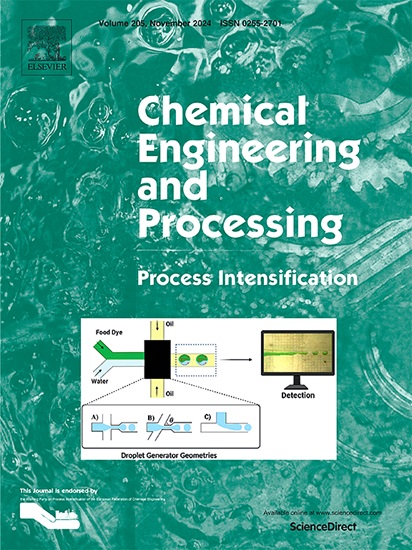Spinning disc technology for intensified continuous flow processing: An overview of recent progress and future prospects
IF 3.8
3区 工程技术
Q3 ENERGY & FUELS
Chemical Engineering and Processing - Process Intensification
Pub Date : 2025-03-08
DOI:10.1016/j.cep.2025.110265
引用次数: 0
Abstract
Continuous thin film flow on a spinning disc has attracted much attention for its enhanced mass and heat transfer, very short, controllable residence times and its ability to intensify fast, exothermic reactions. This perspective paper presents recent advancements in the spinning disc technology, focusing on more detailed film flow and mixing characterisation and quantifying key parameters such as micromixing and residence time distribution. Reactive-precipitation, polymerisations and organometallic reactions are some of the applications that have been extensively studied on the spinning disc. Application to areas of significant interest to net-zero carbon emissions such as biotechnology and biomass/biorefinery industries have most recently also demonstrated performance enhancements compared to traditional, non-intensified processes. Although several challenges remain to be overcome, future prospects of spinning disc technology are promising. The development of advanced designs of multiple stages incorporating ‘green’ electrified energy input and novel disc architectures, such as 3D printed structured and porous surfaces, to further enhance mixing, transport properties and reaction kinetics are some of the exciting prospects. The spinning disc technology also holds much promise for the less well-studied photo-activated reactions, where its dynamic thin film characteristics offer significant potentials for efficient light penetration in photocatalytic synthesis processes.

求助全文
约1分钟内获得全文
求助全文
来源期刊
CiteScore
7.80
自引率
9.30%
发文量
408
审稿时长
49 days
期刊介绍:
Chemical Engineering and Processing: Process Intensification is intended for practicing researchers in industry and academia, working in the field of Process Engineering and related to the subject of Process Intensification.Articles published in the Journal demonstrate how novel discoveries, developments and theories in the field of Process Engineering and in particular Process Intensification may be used for analysis and design of innovative equipment and processing methods with substantially improved sustainability, efficiency and environmental performance.

 求助内容:
求助内容: 应助结果提醒方式:
应助结果提醒方式:


